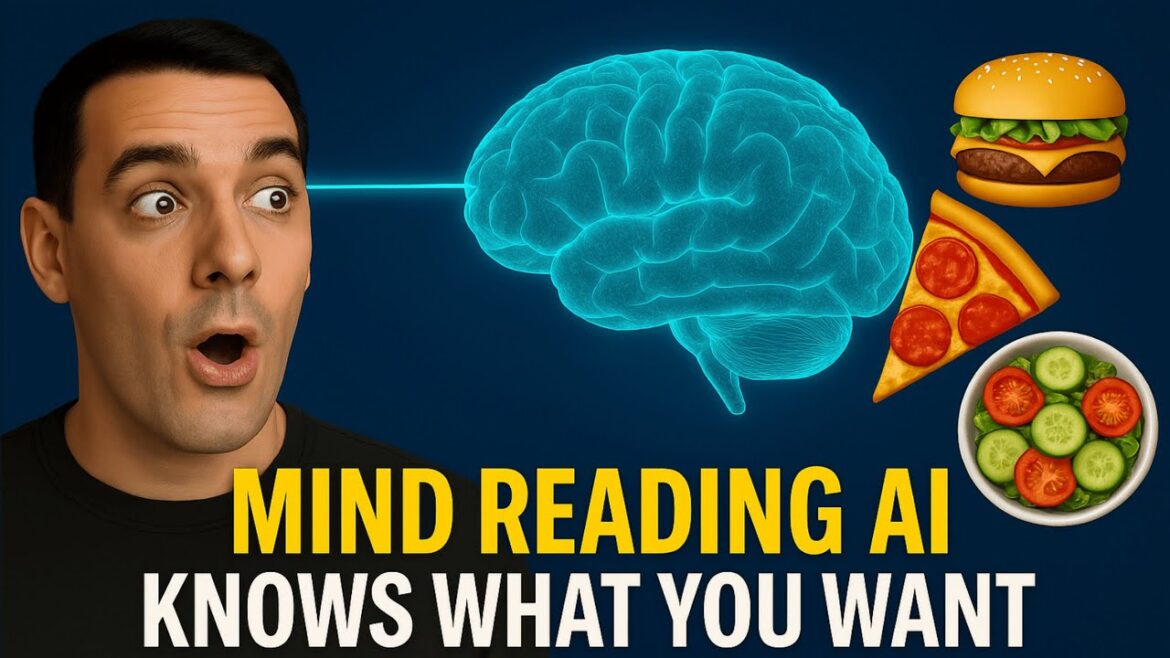Can artificial intelligence really figure out what you’re hungry for before you know? 😳 From analyzing your mood to tracking your delivery habits, AI is stepping into the kitchen literally. Discover how smart algorithms are learning to predict your next meal, create custom recipes, and even cook based on your DNA!
We’ll also explore how AI ethics, cultural nuances, and human emotion all play a role in this deliciously weird future.
Whether you’re a tech geek, a foodie, or just curious this one’s for you. 🍜🤖
📌 Don’t forget to Subscribe for more videos on:
Weekly AI news
Thought-provoking takes on AI ethics
Creative experiments & tech deep dives
📅 New videos every day !
👍 Like • 💬 Comment • 🔔 Turn on Notifications
#ai #ainews #aivideogenerator #aiethics #futuretech #elonmusk #foodiefinds #foodtech #futurefood #openai #chatgpt #crazyai
[Music] So, can AI actually guess your next craving? Imagine this. You’re scrolling through your phone, kind of hungry, but not sure for what. Boom. Your screen shows an ad for spicy ramen. And weirdly, that is what you want. Coincidence or something smarter than coincidence? Here’s the thing. AI is not just reading data anymore. It’s reading you. We’ve come a long way from Netflix recommendations and Spotify playlists. These algorithms are now poking at your gut feelings. Literally. Wait, what does AI know about my stomach? A lot more than you’d expect. Modern AI systems, especially those using deep learning and neural networks, are pulling data from a mess of places. Your food delivery habits a time you usually eat seasonal cravings. Yep. Pumpkin spice latte is basically a data pattern. Even emotional states if you’ve been say doom scrolling while hungry tools like Google’s deep mind and models from open AI are being trained on massive food data sets including millions of images, recipes, and human behavior patterns. They’re learning what combinations of flavor, time, mood, and cultural context make someone like you crave sushi at midnight or pancakes after a breakup. Food plus AI equals strange bedfellows or the future of cuisine. You might be thinking, “Sure, I can tell I like pizza.” That’s not rocket science. But this isn’t just about knowing what you eat. It’s about predicting when and why. Let me explain. I isn’t just analyzing what you’ve eaten. It’s analyzing everything around that moment. How much you slept, the weather, the lighting, your social media tone. Then it correlates those moments with what you tend to want. Imagine your smartwatch detecting your elevated stress, syncing with your Spotify playlist of sad songs, and triggering a food app to suggest warm soup. Not random, patterned, predictable, creepy, maybe accurate, very from predicting to creating. Meet AI chefs. Now, here’s where it gets weirdly amazing. I isn’t only predicting your cravings, it’s starting to cook for them. Real talk, there are AI tools now that generate entirely new recipes based on what’s trending, what’s available in your fridge, or even based on your personal genome. Yeah, that’s a thing. IBM’s chef Watson has cooked up some wild combinations like Swiss Thai asparagus kiche GPT style models can spit out full custom meal plans from I feel bloated and want something comforting but light. It’s like giving your subconscious a kitchen assistant, minus the judgment. But what about taste? Fair point. A model can simulate flavor profiles based on training data, but it still can’t taste yet. That’s where human AI collaboration comes in. Companies like Notco and Climax Foods are using AI to mimic the taste and texture of animal products using only plants. The model predicts which molecular combinations match cheese or milk. Then human chefs tweak it. So yeah, AI is not Gordon Ramsay, but it’s definitely the sue chef whispering, “Hey, maybe cumin instead of chili flakes this time. Cravings and culture. Can AI really get you?” Now, here’s the emotional rub. Food isn’t just about flavor. It’s about memories, family, nostalgia, guilt, joy. Can a machine really predict that? Maybe not entirely, but it can approximate. Imagine AI that learns your family’s traditional dishes, tweaks them based on your health goals, and suggests modern variations that still hit that emotional note. That’s already happening in wellness apps and cultural AI culinary projects. Sure, it’s not your grandma’s lasagna, but it’s trying to be. And sometimes that’s close enough to feel oddly personal. So, what’s the catch? You knew there’d be one, right? Well, here it is. Data. For AI to do this well, it needs a lot of personal data, your eating habits, biometric info, even emotional states, and that opens the floodgates for ethical questions. Who owns that info? What if it’s used to manipulate rather than assist? It’s like your cravings being sold to the highest bidder, literally. And let’s not forget bias in food recommendations can reinforce cultural stereotypes or leave out diverse dietary needs. A vegan Moroccan athlete doesn’t crave the same things as a Texan night shift worker. Context is key. Final thought is AI a psychic or just a really good guess. Honestly, a bit of both. I doesn’t have intuition, but it’s got patterns. And those patterns, fed with enough data and context, get scarily close to what you might want, even before you know you want it. So, next time your phone flashes a f ad just as you’re thinking about lunch, maybe it’s not coincidence. Maybe it’s AI whispering softly. You know you want it. Want more tasty tech breakdowns like this? Hit that subscribe button. Drop your weirdest food craving in the comments. Seriously. And stay tuned because the future might just be flavored with code.

